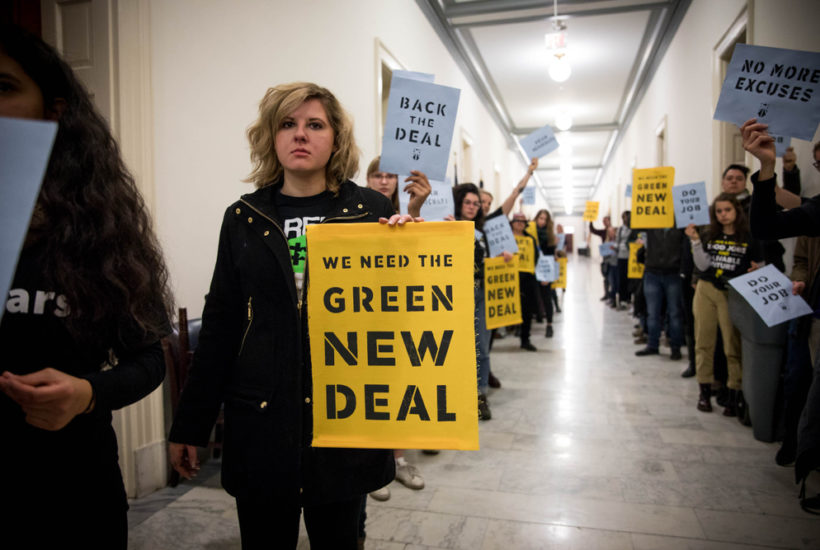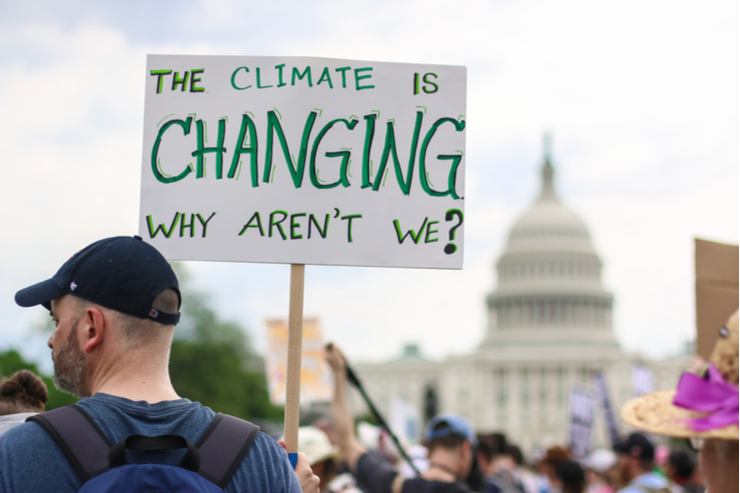Business
Here’s how the ‘Green New Deal’ has already worked
Hundreds of organizations and dozens of individuals, including presidential hopefuls, have signed to support the “Green New Deal.”

If you have assets, income, or both, then you are responsible for every bad thing that has happened in the U.S. But don’t worry! The Green New Deal, co-sponsored by Rep. Alexandria Ocasio-Cortez and Sen. Ed Markey, will give you a chance to fix it.
All you have to do is sign over, well, everything to the central government, which will then use its wisdom to determine how we should live for the foreseeable future so that all outcomes are equalized and no one is left behind.
Good-paying jobs? Check.
Universal healthcare? Of course.
Free education? For everybody!
Pollution? Zero (after 2050).
Respect all indigenous people? You know it.
Consider every single environmental impact for every action ever undertaken? Duh.
After all, it’s your duty.
As you read the Green New Deal proposal, you’ll find that it says it’s not just a good thing to do this, it is the duty of the United States to go down this path.
The document would be laughable except for one thing. Few people are laughing.
More than 600 organizations signed in support of it, and so have dozens of individuals, including many Democratic Presidential hopefuls.
It’s hard to say any of them think this proposal, which is more of a college freshman’s dream or a description of Cuba or Venezuela from the good old days, is realistic, but that’s not the point.
As AOC — as she’s called — explained, the goal is to move the boundaries of the conversation far enough with the extreme Green New Deal proposals that a carbon tax would look like the moderate option.
America, you just got played.
The Overton Window
AOC and Markey used a tactic that recalls the Overton Window, a reference to a range of scenarios within two extremes that are considered possible.
The goal of the policy conversation isn’t to land on one particular thing, it’s to expand the window one direction so as to put more options on the table.
To be fair, the Overton Window was first described by political scientist Joseph Overton of the conservative Mackinac Center for Public Policy. This sort of gambit has been used by people of all political persuasions, and even parents when dealing with their kids.
The key to the conversation — don’t discuss the alternatives at the other end of the spectrum.
The entire Green New Deal has been priced out at $50 trillion to $90 trillion, but that includes stuff about healthcare, job guarantees, education, etc. Let’s focus on just climate change.

Beyond getting rid of airplanes and cows, the deal to reduce emissions by 40 percent to 60 percent by 2030 and completely by 2050 would require spending about $14 trillion, according to numbers from the American Action Forum (give or take a few trillion). That’s about three times the current spending plan of the U.S. government for all of 2019 (I didn’t call it a budget because there’s no balance).
And it won’t work.
It all means more taxes
The most generous estimates of how to limit climate change to 1.5 degrees Celsius (beyond which it doesn’t matter because the bad changes will happen anyway) all require nations around the world to participate — here’s looking at you, China and India – and some way to extract carbon from the air on a large scale.
The first one, participation, isn’t happening, and the second, carbon extraction, isn’t technically feasible today.
But forget that. As long as AOC and Senator Markey can make you feel good about reaching a “compromise” position that calls for widespread carbon taxes instead of these extreme measures, then hey, they’ve succeeded.
The carbon tax is just the tip of the melting iceberg. If that gets through, you can bet we’ll hear demands for all sort of other taxes to pay for all the “free” stuff. It’s amazing how things called “free” by the government end up being so expensive for taxpayers.
And of course, if the Intergovernmental Panel on Climate Change (IPCC) is correct on our changing planet, a carbon tax won’t do a thing to keep temperatures below 1.5 degrees Celsius. The changes brought about by such a tax would be a drop in the proverbial bucket. But they will take more assets from us and put them in the hands of the central government, which is clearly staffed by people who are smarter than us and know more than we do.
Notice something interesting
Notice that Miami doesn’t show up in the national conversation. The residents of Miami aren’t waiting for some proposal on high. They passed an infrastructure funding plan and have begun to work on shoring up their town (pun intended) against the potential of rising sea levels.
But we can’t discuss mitigating the effects of climate change instead of fighting to eliminate rising temperatures in the first place, because that would be opening Overton’s Window the other direction and ruin the current narrative and take money away from the central government.
I can’t imagine a single national politician signing on to such a plan.
(Featured image by Rachael Warriner via Shutterstock)
—
DISCLAIMER: This article expresses my own ideas and opinions. Any information I have shared are from sources that I believe to be reliable and accurate. I did not receive any financial compensation for writing this post, nor do I own any shares in any company I’ve mentioned. I encourage any reader to do their own diligent research first before making any investment decisions.

-

 Cannabis1 week ago
Cannabis1 week agoLuxembourg’s Cannabis Paradox: Legal at Home, Restricted Everywhere Else
-

 Crowdfunding1 week ago
Crowdfunding1 week agoCommunity Energies 2026: Funding Projects Combating Youth Loneliness
-

 Cannabis3 days ago
Cannabis3 days agoMedical Cannabis in Poland 2025: Growth, Stability, and Wider Access
-

 Impact Investing1 week ago
Impact Investing1 week agoEU End-of-Life Vehicles Rule Pushes Cars Toward a Circular Economy
























